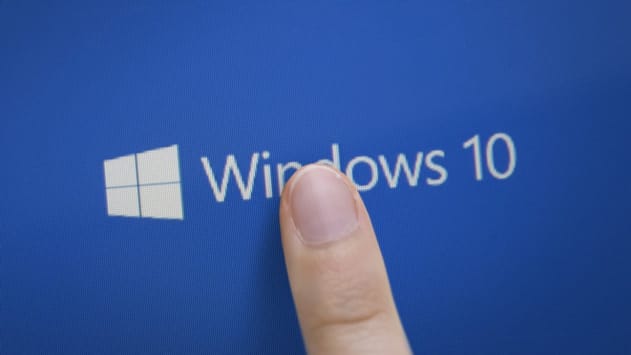Turning off Windows Update in Windows 10 is a matter of concern for many users, but before we land up discussing it let us look at some data depicting the success story of the new launched operating system. Windows 10 is beginning to resemble a tremendous accomplishment for Microsoft as the appropriation of the operating system hits 200 million users. Windows 10 is growing quicker than Windows 7 and more than speedier than Windows 8. It has been watched that of new Windows 10 gadgets have been actuated as of late. More than 11 billion hours has been spent utilizing Windows 10, as indicated by Microsoft. That means around 365 million hours of each day.
Nevertheless, like every good product with pros, it will also have cons and for Windows 10 it is its strategy of forced updates. While extraordinary in principle, for some users the truth of updates that download and introduce consequently has been very different, and the inquiry or question in many users mind is: How would you stop them?

Not at all like the different versions that have preceded it, automatic updates in Windows 10 can’t be just tinkered with. Microsoft will force updates to your Windows 10 controlled computer that will be automatically downloaded. The thought is to stay up to date with the latest and safe most recent security patches installed. However, for few users, it is truly irritating. Some do not actually require any upgrade as they dread of specific changes. Fortunately, there are some routes around this. In this tutorial to turn off Windows Update in Windows 10, we will be taking you through three unique processes that help to manage automatic updates as per your preference.
Turn off Windows Update in Windows 10
We will simply ahead and acquaint you with some simple strides now that can fathom your issues turn off Windows Update in Windows 10 and will give a bit of peace. Presently we have an answer: with three potential alternatives. Automatically Windows 10 PC’s will check for updates and introduce any updates they find. You can take some control over this and can install the Windows updates as per your time. Professional, Enterprise, and Education editions of Windows 10 have admittance to group policy and registry settings for this, even Home editions of Windows 10 give you an approach to prevent updates from automatically downloading.
Stop the Windows Update Service
As focal as it is at the center of Windows 10, user can control the process of Windows update with these straightforward walks:
Step 1: Open the Run dialogue box just by pressing Win + R keys and write the command “services.msc” and press enter.
Step 2: From the Services list which shows up find the “Windows Update” administration and just click on it.
Step 3: Under the General tab, stop the service by selecting “Stop” and choose the startup type to “Disable.”
Step 4. Restart the PC. If any issue occurs, boot Windows 10 in Safe Mode.
Configure Metered Connection in Windows 10
A metered connection is a new feature of Windows 10, a compromise to save bandwidth. Microsoft affirms the computer will directly download and install updates whatever it sees as a ‘priority.’
While Microsoft doesn’t uncover its strategy for classification, this cuts down more pointless updates which regularly incorporate new drivers and programming highlights – both of which have as of now brought on stability issues. Here are the steps to set Windows 10 Operating System into Metered mode.
Step 1: Open the Settings application by pressing the combination of Win + I keys.
Step 2: Open the ‘System and Internet’ division.
Step 3: Open ‘Wi-Fi’ and click Options stated as advanced.
Step 4: Toggle ‘Set as metered association’ to “On.”.
Utilizing Group Policy Editor
In Windows 10, the choice to cripple automatic updates is imperceptible as a matter of course. You can change a setting in Group Policy Editor to make this selection show up and hence you will safely turn off Windows update in Windows 10. To open Group Policy Editor, go to Start Menu then select Run dialogue box or Cortana and look for gpedit.msc and press enter.
Step 1: Click on Computer Configuration and select Admin Templates on the accompanying page.
Step 2: Now select “All Settings” and look down the list to see the passage that says “Configure Automatic Updates.”
Step 3: Double tap on it and select a button labeled “Enabled” from the upper left side.
Step 4: Once you have done that, you ought to have the capacity to alter the Options pane at the base. Select the drop bar and choose the fifth option that says “Allow local administrator to pick setting.”
If you need your Windows 10 computer not to check for updates, there’s a method for that too. However, we don’t suggest you do this. All things considered, this is the way:
Step 1: Go back to Group Policy Editor as said above.
Step 2: Now select “All Settings” and look down for the section that says “Configure Automatic Updates.”
Step 3: Double tap on it and select Disabled.
That is it. Now your computer won’t verify what Windows 10 updates are available to download.
In Windows 10, updates and upgrades are mandatory. A few Windows 10 editions include the options to concede upgrades temporarily. Security updates, however, are avoided from this choice, everybody gets them automatically. Meanwhile, Windows 10 Home users need to manage all updates and upgrades being downloaded and installed, followed by a scheduled reboot. Security patches, new components, and settings changes are forcibly fed alike, some flanking bloat and adware. In numerous ways, Windows Update is simpler to utilize and more secure for the regular individual user. Unless a user is willing and ready to utilize advanced tools, they won’t miss another security update.
The decision to Turn off Windows Update in Windows 10 is not a good option. However depending on your preferences the processes as mentioned above will surely help you is my soul belief.

